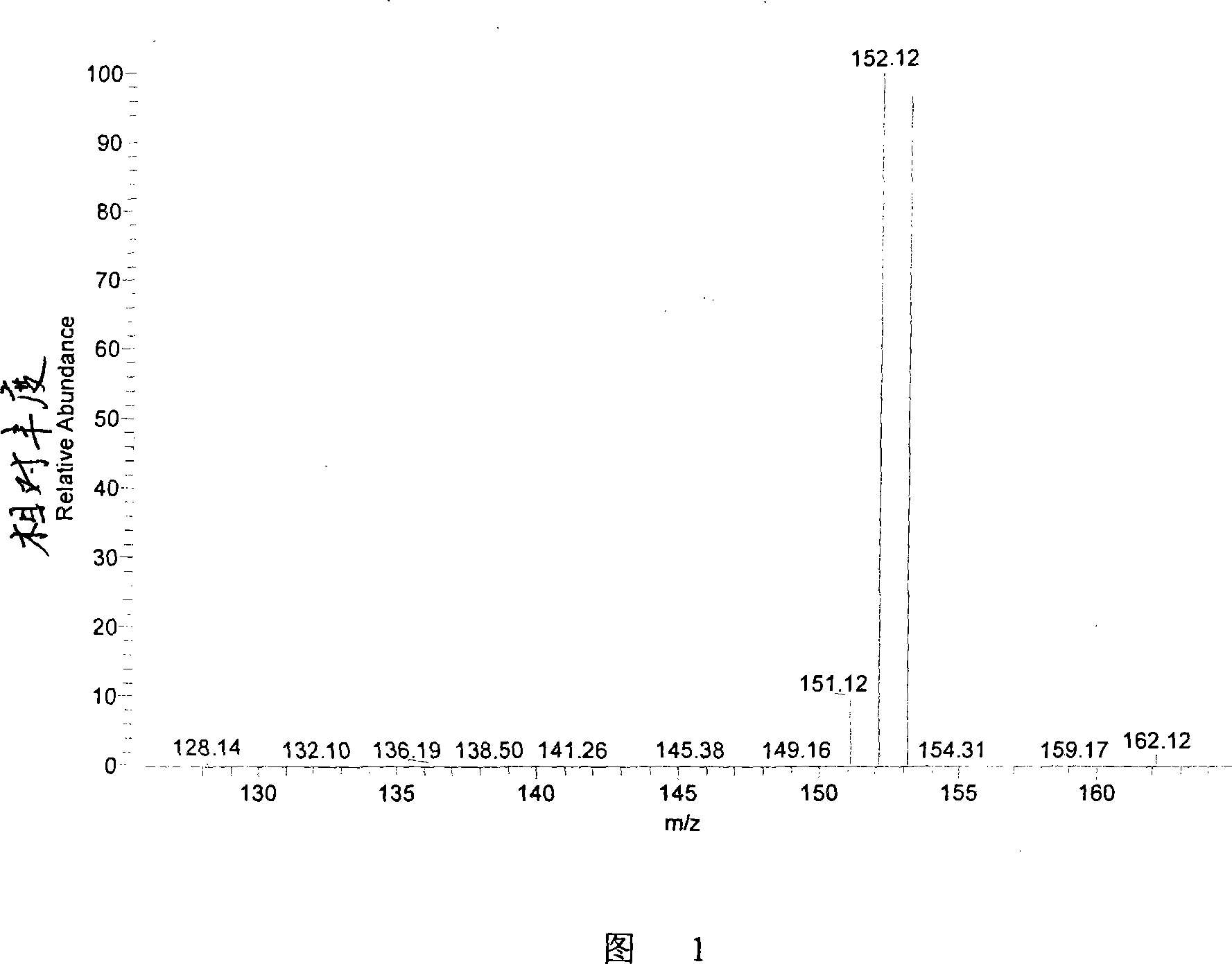Method for detecting atmosphere granule trace polychlorinated biphenyls by ion trap tandem mass spectrometry
An atmospheric particulate matter and tandem mass spectrometry technology, which is applied in the field of ion trap tandem mass spectrometry to detect trace PCBs in atmospheric particulate matter, can solve the problems of time-consuming, labor-intensive, mutual interference, cumbersome steps, etc., to save analysis time and achieve accurate and reliable qualitative analysis , The effect of saving analysis costs
- Summary
- Abstract
- Description
- Claims
- Application Information
AI Technical Summary
Problems solved by technology
Method used
Image
Examples
Embodiment 1
[0024] Embodiment 1: (chromatograph under initialization condition, mass spectrometry condition)
[0025] (1) Concentration of standard substance. Prepare 31 PCBs standard solutions with a concentration of 100pg / μL;
[0026] (2) Chromatography (GC) conditions: the chromatographic column adopts DB-XLB chromatographic column, and the specification is 15m×0.25mm (inner diameter)×0.25m (film thickness); 150°C, 2.5°C / min to 250°C (hold for 5min); inlet temperature 270°C; splitless injection 1L.
[0027] Helium (purity>99.999%) was used as the carrier gas, and the flow rate was 1.0 mL / min (constant flow mode).
[0028] (3) Mass spectrometry (MS) conditions: the ionization mode is EI ionization, the ionization voltage is 70eV, the ion source temperature is 250°C, and the transfer line temperature is 280°C.
Embodiment 2
[0029] Embodiment 2: (optimize the secondary mass spectrometry condition: select parent ion, product ion)
[0030] (1) The concentration, chromatographic conditions, and mass spectrometry conditions of 31 kinds of polychlorinated biphenyl standard substances are the same as in Example 1;
[0031] (2) Secondary mass spectrometry (MS 2 ) conditions: 31 kinds of PCBs standard substances with a concentration of 100pg / μL were operated under the conditions of the present embodiment (1) to obtain corresponding primary mass spectrometry (MS 1 ) spectrum, record the retention time (RT) of each target compound according to the peak order of the target compound in the chromatographic column, and select the molecular ion peak [M] + As the precursor ion in MS / MS conditions, the MEE parameter value is set to 0.3, the EV parameter value is selected to be 1.5V, and the two most abundant fragment ions [M-CI] in the fragmentation fragments of the precursor ion are selected [M-CI] + or [M-2CI]...
Embodiment 3
[0035] Embodiment 3: (optimize the secondary mass spectrometry condition: the optimization of MEE parameter)
[0036] (1) The concentration, chromatographic conditions, and mass spectrometry conditions of 31 kinds of polychlorinated biphenyl standard substances are the same as in Example 1;
[0037] (2) Secondary mass spectrometry (MS 2 ) conditions: the selection of parent ions and product ions of 31 polychlorinated biphenyl target compounds is detailed in Example 2 (2). Set the parameter value of MEE (maximum resonance energy) to 0.225, the parameter range of EV (dissociation voltage) from 0.5 to 6.0V with an interval of 0.25V, a total of 17 parameters, select 2 product ions as quantitative ions, and obtain by integration The peak area response of the response, from which the best peak area response is selected, and the total peak area is 60108;
PUM
| Property | Measurement | Unit |
|---|---|---|
| length | aaaaa | aaaaa |
| recovery rate | aaaaa | aaaaa |
Abstract
Description
Claims
Application Information
 Login to View More
Login to View More - R&D
- Intellectual Property
- Life Sciences
- Materials
- Tech Scout
- Unparalleled Data Quality
- Higher Quality Content
- 60% Fewer Hallucinations
Browse by: Latest US Patents, China's latest patents, Technical Efficacy Thesaurus, Application Domain, Technology Topic, Popular Technical Reports.
© 2025 PatSnap. All rights reserved.Legal|Privacy policy|Modern Slavery Act Transparency Statement|Sitemap|About US| Contact US: help@patsnap.com

